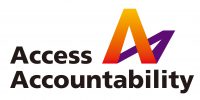When people first hear about the international human rights system, people go like, “Oh, that must be such a difficult thing that only lawyers can do. Or people with some kind of academic background can do.” Well, that is not actually the case. And the whole point of the existence of this kind of UN human rights system is actually to help NGOs or activists further their advocacy in terms of human rights. So the goal of my talk today basically is to familiarize yourself with the UN human rights system and to learn how to actually utilize it in the field of human rights work that you actually carry out.
First of all, why talk about the UN human rights system. If you experience human rights violations, the first recourse that you will find will usually be in the domestic courts. You can sue the government or other public authorities before a district court, appeals court, end up in the supreme court or even the constitutional court. If the court finds the violations, and rule in your favor or the remedies obviously would resolve the issue right there. Unfortunately, in many cases that is not necessarily the case, especially, for example, if you are member of an ethnic, or religious minority in a society where discrimination is rampant, it would be very difficult for you to find justice even before a court of law. In such cases, one way to realize human rights would be to appeal your case to the UN human rights system. The UN human rights bodies refer to universal human rights norms, and they also carry the weight or gravitas of the UN, which is the most well-known international organization in the world.
Unfortunately, the UN human rights experts are not experts of the local issues, or the local human rights conditions. And this crucial information gap needs to be filled by the local civil societies or activists or advocates.
Now, you might wonder if the UN is the only available international human rights mechanism, if you’re actually living in Europe or Latin America or Africa, there are actually regional human rights bodies as well. For example, the European Court of Human Rights (ECHR), Inter-American Court of Human Rights (IACHR) and African Court on Human and Peoples’ Rights (AfCHPR) serve the peoples in those three continents. Unfortunately, in the case of South Korea, or in the broader Asia-Pacific region, Asia region there are no regional human rights mechanisms in place, because of the political situations in the continent. One is not exactly expected to be created in the near future, which basically leaves you only with the UN human rights system as a viable option.
So let’s look at the brief history of the UN human rights system, which goes back to the adoption of the Charter of United Nation in 1945 at the end of World War II. The UN Charter was the first international treaty that actually mentioned human rights in this text. Its provisions obliged the member states to respect and observe human rights without distinction, as to race, sex, language or religion. The Charter itself actually does not contain substantive rights, or obligations that member states must observe. But in 1948, three years after the creation of the United Nations, the UN General Assembly adopted the Universal Declaration of Human Rights (UDHR), which lists a number of human rights that all human beings enjoy by virtue of being members of humanity. The Universal Declaration of Human Rights (UDHR) itself not an international treaty, and it does not have legally binding force. But in the next decades, the Universal Declaration on the rights contained in the Universal Declaration have been recognized as universal rights in many national jurisdictions. And also many human rights treaties, for example, the International Covenant on Civil and Political Rights (ICCPR), or the International Covenant on Economic, Social and Cultural Rights (ICESCR) have been adopted finding its roots in the Universal Declaration of Human Rights. So that’s how the UN human rights systems came into being since 1945.
There are basically three main UN human rights mechanisms or tools available. The first is the UN human rights treaty bodies. These treaty bodies are composed of independent human rights experts. And their mission is to ensure that the states parties to individual human rights treaties actually observe the obligation contained in those human rights treaties. So states parties have the obligation to submit periodic reports. Basically progress reports on how they have been actually observing provisions of human rights treaties in their country. And in some cases, the individuals living in those countries can bring up a case before the human rights treaty bodies, claiming that the governments have violated the provisions within the human rights treaties.
Second, the UN Human Rights Council appoints what a called UN Special Procedures. These are basically human rights ombudsman on various thematic, country issues. For example, there are Special Rapporteur on torture, Special Rapporteur on extrajudicial killings. And there are also working groups on arbitrary detention and on enforced disappearances as well as Special Rapporteurs on countries with grave human rights violations such as Myanmar or North Korea.
Lastly, the UN Human Rights Council has what is called Universal Periodic Review (UPR). Under the UPR system, all 193 UN member states are obligated to submit their human rights situation for review every 4-5 years, which is reviewed by other UN member states who come up with recommendations to improve the human rights situations in the country under review. So that’s the gist of the UN human rights system.
Last Updated: February, 2020
Author: Ethan Shin
